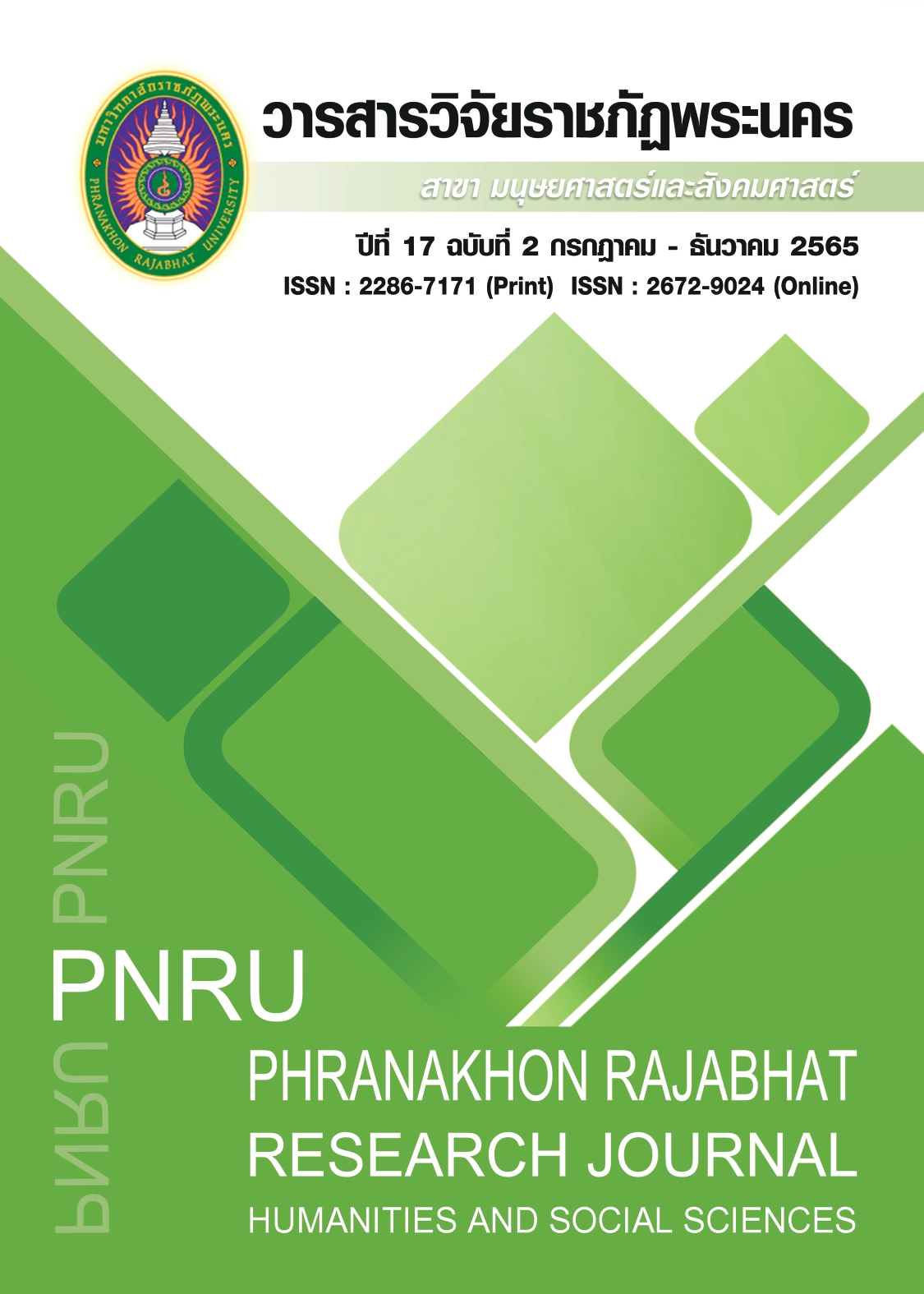NEW STANDARD PRACTICE OF THE AIRPORT OPERATIONS FOR THAILAND DURING THE OUTBREAK OF CORONAVIRUS DISEASE 2019 (COVID-19)
Main Article Content
Abstract
Airlines and airports are experiencing an unprecedented challenge from the outbreak of Coronavirus Disease 2019. The research aims 1) to explore the practice of an airport operations during the COVID-19 pandemic, 2) to compare the views
of passengers and frontline personnel on the new standard practice of airport operations, and 3) to propose the new standard procedures for airport operations. This study employed mixed methods, mainly a survey, supplemented by an in-depth interview for robustness. The sample comprised 150 frontline employees who work at the airport, including airline staff, airport workers, retail employees, and the personnel in service providers. Moreover, 150 customers have experience using the airports during the COVID-19 pandemic. Key findings and analyses revealed that the new standard practice for airport operations comprised four factors: technologies, environments, services, and operations. Hygiene environment and non-touch technologies such as using biometric solutions for border clearance, self-boarding passes, baggage scanners, and intelligent tags & RFID make passengers confident that the airport's area is safe and free from coronavirus infection.
Article Details

This work is licensed under a Creative Commons Attribution-NonCommercial-NoDerivatives 4.0 International License.
Each publish articles were copyright by Phranakorn Rajabhat University
Any contents which appeared in each articles in the journal were authors personal opinion. It did not relate to Phranakorn Rajabhat University and other instructors in the university. Each authors would take responsibility on their articles. If there are any mistake, the authors will take responsibility themselves
References
Airport Council International: ACI. (2021). The impact of COVID-19 on the airport business and the path to recovery. Retrieved from https://aci.aero/news/the-impact-of-covid-19-on-the-airport-business-and-the-path-to-recovery/. [2021, 30 Nov.]
Airport of Thailand: AOT. (2020). Digital transformation in aviation industry. Retrieved from http://investor.airportthai.co.th/misc/AR/20210108-aot-ar-2020-en.pdf [2022, 2 Feb.]
Bolat, E., & Ateş, S. S. (2020). Post COVID-19 Precautions management in small-scale airports: evaluation of check-in process in Erkilet Airport by simulation. Journal of Airline and Airport Management, 10(2), 77-86.
Charernnit, K., & Kankaew, K. (2020). The airport’s workforces that reflecting service quality: Passenger’s Perspective. Journal of Critical Reviews, 7(13), 2039-2042.
Choi, J. H. (2021). Changes in airport operating procedures and implications for airport strategies post-COVID-19. Journal of Air Transport Management, Vol. 94, 102065.
CopOpt. (2020). How COVID-19 impacts airport operations planning: Physical distancing, volatile schedules, and limited budgets. Retrieved from https://copenhagenoptimization.com/wp-content/ [2022, 11 Jul.]
Dixon et al. (2021). How COVID-19 is challenging orthodoxies in airport customer experience. Retrieved from https://bit.ly/3qyEMuN. [2022, 14 Jan.]
Ebo, K. C. (2019). A Study on the Financial Challenges Facing US Aviation Industry in the 21th Century: Case Study of Southwest Air. PhD. Thesis. Northcentral University.
Henschke, M. (2020). User behavior with unguided no touching gestural interfaces. PhD thesis. The Australian National University, PQDT - Global, 227.
International Air Transport Association: IATA. (2021). Precautions to Take, Flying by Air in Covid times. Retrieved from https://www.iata.org/en/youandiata/travelers/health/precautions-to-take-flying-by-air-in-covid-times/. [2021, 24 Oct.]
International Civil Aviation Organization: ICAO. (2020). Council Aviation Recovery Task Force (CART). Retrieved from https://www.icao.int/covid/cart/Documents/CART_Report_Take-Off_Document.pdf. [2021, 8 Dec.]
International Civil Aviation Organization: ICAO. (2022). Effects of Novel Coronavirus (COVID-19) on Civil Aviation: Economic Impact Analysis. Retrieved from https://www.icao.int/sustainability/Documents/Covid-19/ICAO_coronavirus_Econ_Impact.pdf [2022, 11 Aug.]
Kassens-Noor, E. (2019). Transportation planning and policy in the pursuit of mega-events: Boston’s 2024 Olympic bid. Transport Policy.
Lunna, S. (2021). Trends of technology changes in airport passenger services, Post COVID-19 era. 1st ISCAMR 2021, 330-336.
Marketsandmarkets. (2020). Covid-19 the impact on airport operation. Retrieved from https://www.marketsandmarkets.com/Market-Reports/covid-19-impact-on-airport-operation-technology-market-172662604.html. [2021, 18 Dec.]
Nawal, T. (2017). Airline Industry: Poised for Disruptive Innovation. London and New York: Routledge.
Nejat, K. (2021). Passenger experience and expectations during COVID-19. Retrieved from https://www.internationalairportreview.com/article/154897/passenger-experience-expectations-covid-19/ [2022, 19 Mar.]
Paethrangsi, N. (2021). Maximizing revenue in airline industry through air cargo operations. E3S Web of Conferences, 244(1), 08019. EDP Sciences.
Parcell, J. (2020). Technology Development under Uncertainty: Assessing the Impacts of COVID-19 on Autonomous Vehicle Development. PhD. Thesis. Michigan State University.
Raimnekov, Z., Syzdykbayeva, B. (2021). Assessing the impact of transport and logistics on economic growth in emerging economies: A case study for the conditions of the Republic of Kazakhstan. Transport Problems International Scientific Journal, 16(2), 199-211.
Remencova, T. & Novaksedlackova, (2021). A. Position of central European regional airports. Transport Problems International Scientific Journal,16(3), 163-172.
Tavakol, M., & Sandars, J. (2014). Quantitative and quantitative methods in medical education research: AMEE Guide No 90: Part 1. Med Teach, 36(9), 746-756.
Tomović et al. (2020). Contribution to the Theory of the Business Success of Transport Organizations. Tehnički Vjesnik, 27(4), 1084-1091.
Ware, J. C. (2019). Secure Authentication Mechanisms for Smart City and Infrastructure. Ph. D. Dissertations, Utica College.
Worldometers. (2022). Coronavirus Death Toll. Retrieved from https://www.worldometers.info/coronavirus/coronavirus-death-toll/ [2022, 3 Aug.]


